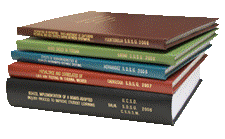Libraries at University of Nebraska-Lincoln

Archival Master’s Theses from the University of Nebraska-Lincoln
Date of this Version
1962
Document Type
Thesis
Citation
Thesis (M.S.)—University of Nebraska—Lincoln, 1962. Department of Agronomy.
Abstract
In recent years a number of new materials have appeared on the market for use in correcting deficiencies of zinc. Some of these materials have been experimental, others have been available commercially and used successfully to correct zinc deficiencies in other areas of the United States. These materials are both inorganic and organic in nature.
Many questions have been raised relative to the effectiveness of these new sources of zinc for the correction of nutrient deficiency of corn and other crops. There have been statements made that chelates and organic complexes were 10 times as effective for correcting zinc deficiencies as inorganic sources of this essential nutrient element. This investigation was initiated to evaluate the efficiency of utilization of zinc in various organic and inorganic materials by corn grown in a greenhouse environment. One of the objectives of the investigation was to determine whether genetically different hybrids of corn would have the same ability to take up and utilize zinc from these various organic and inorganic sources in their growth processes.
The soil used in this investigation was sampled in a field in Hitchcock County, Nebraska that had been leveled for irrigation and had approximately 3 feet of the surface soil removed. The field has shown marked evidence of zinc deficiency of corn during the previous growing season.
Advisor: Leon Chesnin


Comments
Copyright 1962, the author. Used by permission.